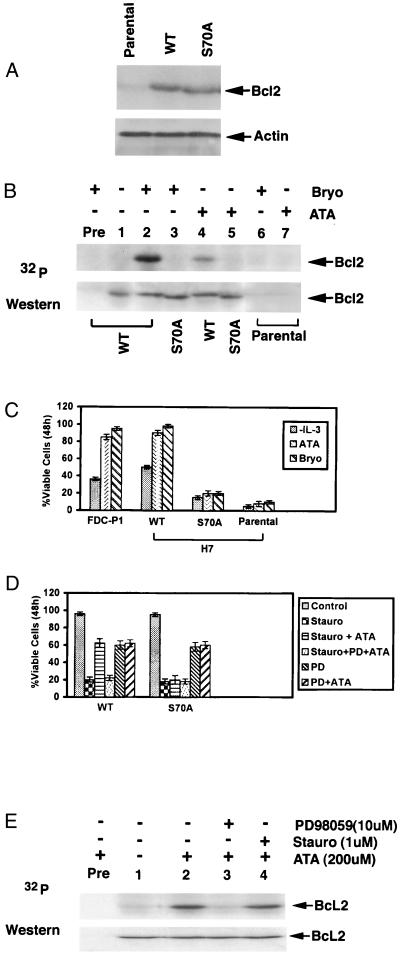Figure 2.
ATA induces Bcl2 phosphorylation at Ser-70 in a PD98059-sensitive, stauro-resistant manner and enhances cell survival. (A) Bcl2 protein expression was determined in H7 cells transfected with wt or S70A Bcl2 by Western analysis using Bcl2 antibodies. (B) H7 cells expressing exogenous wt or S70A mutant Bcl2 were metabolically labeled with 32P-labeled orthophosphoric acid and treated with Bryo (100 nM) or ATA (200 μM) as indicated. Cells were lysed and analyzed as described in Fig. 1. (C) FDC-P1 cells expressing endogenous Bcl2, parental H7 cells, and H7 cells expressing exogenous wt or S70A Bcl2 were deprived of IL-3 and treated with or without ATA (200 μM) or Bryo (100 nM) for 48 h, and cell viability was determined by trypan blue dye exclusion. Data represent the mean of three separate determinations. (D) H7 cells expressing wt or S70A Bcl2 in the presence of IL-3 were treated with 1 μM stauro or 10 μM PD98059 in the presence or absence of 200 μM ATA for 48 h, and cell viability was determined as described above. (E) H7 cells expressing wt Bcl2 were metabolically labeled with 32P-labeled orthophosphoric acid and treated with 200 μM ATA with or without PD98059 (10 μM) or Stauro (1 μM) as indicated. Immunoprecipitated Bcl2 was analyzed as described in Fig. 1.

